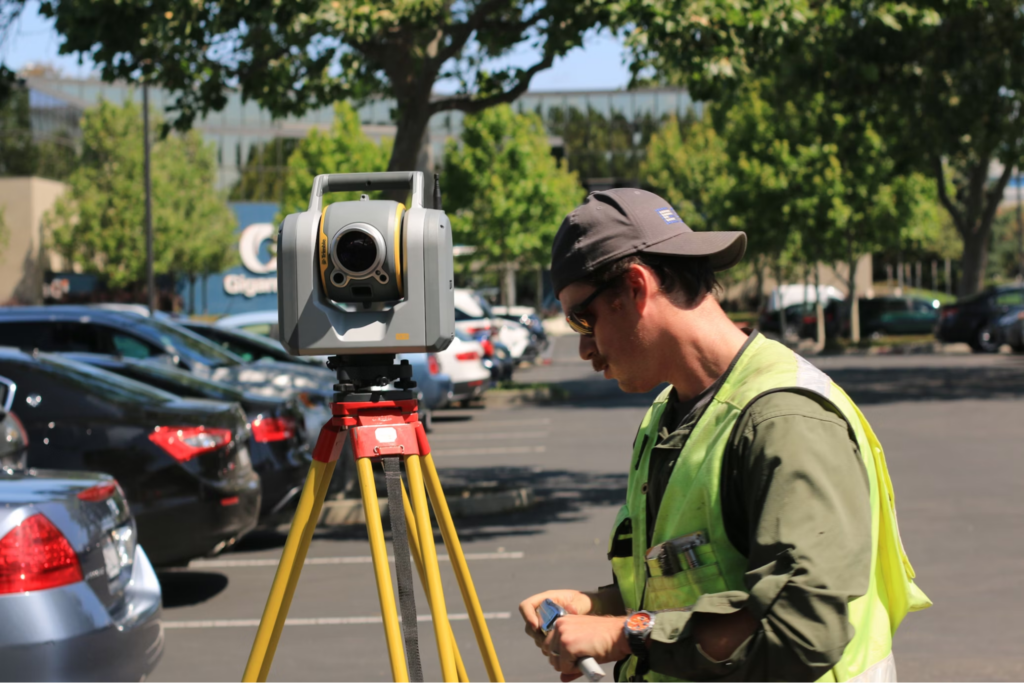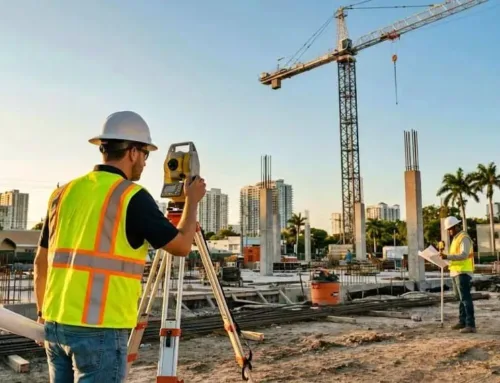Diving into the world of land surveys, we often encounter a common mix-up: “boundary survey vs land survey.” Understanding these two cousins in the surveying family is vital to any land-related project. Each type of survey has its unique purposes and applications, crucial in different scenarios. Whether you’re a property owner, developer, or just curious, getting to grips with these surveys is like unlocking the land’s secrets. Let’s journey to demystify these terms and understand their importance in the world of land and property!
Definition of Boundary Survey
A boundary survey is like detective work, focusing on defining a property’s exact corners and lines. It’s all about the property lines and corners – the invisible lines that define ownership. These surveys carry significant legal implications, often required in transactions, disputes, or development. Need to settle a fence dispute with your neighbor? A boundary survey is your go-to solution. It is pivotal in resolving property disputes, ensuring everyone knows where their land begins and ends.
Related: How To Easily Get A Property Line Survey
Definition of Land Survey
The land survey is the all-rounder of the survey world. It covers a broad scope, looking beyond just boundaries to include topography, features, and elevations. These surveys are essential in development and planning, providing a comprehensive view of the land. Whether constructing a new building or designing a subdivision, a land survey is indispensable. Its comprehensive nature makes it more detailed than a boundary survey, offering a full picture of what’s on and beneath the land’s surface.
Legal Aspects and Compliance
Both surveys come with their legal nuances. Boundary surveys have solid legal backing and are often used in court to settle disputes. On the other hand, land surveys are critical in compliance with development regulations and zoning laws. Their reports serve as official documents in various legal contexts, from property transactions to resolving legal issues. Understanding the differences in legal validity and applications of each survey type is crucial for anyone involved in land management or development.
Need help determining which survey suits your needs? Get a Free Quote at Millman National Land Services and confidently choose the correct survey!
Technology and Tools Used
In the world of surveying, technology is a game-changer. For boundary surveys, tools like theodolites and GPS devices are commonly used to pinpoint property lines accurately. Land surveys, however, often require more advanced equipment like laser scanners and aerial drones to capture detailed topographical data. These technological advancements have significantly increased both accuracy and efficiency in surveying. The level of detail required often dictates the choice between a boundary and a land survey, with technology playing a pivotal role in this decision-making process.
Related: What To Know Before Split a Property Into Two Parcels
Professional Expertise Required
The expertise behind the theodolite or drone is just as significant as the tools themselves. Surveyors specializing in boundary surveys must deeply understand legal property frameworks. On the other hand, conducting land surveys requires knowledge of topography and advanced surveying technologies. The right professional can make a difference, ensuring accuracy and compliance with legal standards. The training and certification of surveyors vary based on their specialization, directly influencing the outcome and reliability of the survey.
Cost and Time Considerations
Let’s talk numbers – both time and money. Boundary surveys, typically simpler, can be less expensive than the more comprehensive land surveys. However, the costs and time required for each survey vary greatly depending on the size and complexity of the land. It’s important to budget and plan accordingly, considering the type of survey required. In some scenarios, the additional cost of a detailed land survey can offer greater value, especially in complex development projects.
Related: 5 Reasons You Need Commercial Land Survey
Understanding Survey Reports
Survey reports are the final, crucial products of a surveyor’s work. A boundary survey report focuses on defining property lines, while a land survey report describes the land’s topography. Understanding these reports is crucial to decision-making in property development and management. The presentation and details in these reports vary significantly, and their clarity and accuracy are paramount. Whether for legal, development, or personal purposes, these reports serve as essential documents for various stakeholders.
Case Studies and Real-world Applications
Diving into real-world scenarios, boundary surveys have been pivotal in countless real estate transactions, clearly defining property lines and preventing disputes. Meanwhile, land surveys have laid the foundation for large-scale development projects, from residential complexes to commercial hubs. Each survey type offers valuable lessons, shaping how we manage and develop the land. Their impact on land use and property ownership is profound, with each survey type bringing unique insights and benefits. A comparative analysis shows just how differently these surveys can influence outcomes in land-related projects.
Choosing the Right Survey for Your Needs
Selecting the right survey is vital to achieving your land management goals. Assess your specific survey requirements – are you defining boundaries or planning a development? Consider the project’s scale, legal requirements, and long-term goals. Consulting with professional surveyors is invaluable; their expertise can guide you to the best choice for your project. Remember, the proper survey can make all the difference in the success of your land-related endeavors.
Need clarity on land and boundary surveys? Click for a Free Quote from Millman National Land Services and ensure precision in your property decisions!
Making the Right Survey Choice for Your Property
Understanding the distinctions between boundary and land surveys is more than academic; it’s essential for informed property management and development. A boundary survey determines the precise perimeters of your property, a fundamental step in ownership and dispute resolution. In contrast, a land survey provides a comprehensive overview, crucial for development planning and land use.
The accuracy of these surveys is vital. It affects everything from individual property rights to large-scale development projects. An incorrect or inadequate survey can lead to legal complications, development delays, and financial losses. This underscores the importance of precise and reliable surveying.
Seeking professional advice is not just a recommendation; ensuring that your survey aligns with your specific needs is necessary. Expert surveyors can guide you through the nuances of each survey type, helping you make an informed decision based on your project’s scale, legal requirements, and goals.
Millman National Land Services offers a wealth of experience and expertise for those looking for expert surveying solutions. Their team can provide the guidance and services needed to navigate the complex landscape of property surveys.
Choosing the right survey for your property is a critical decision that impacts the success of your land management and development projects. Understanding the differences between boundary and land surveys and consulting with professionals like Millman National Land Services ensures that your property decisions are built on accuracy and expertise.









